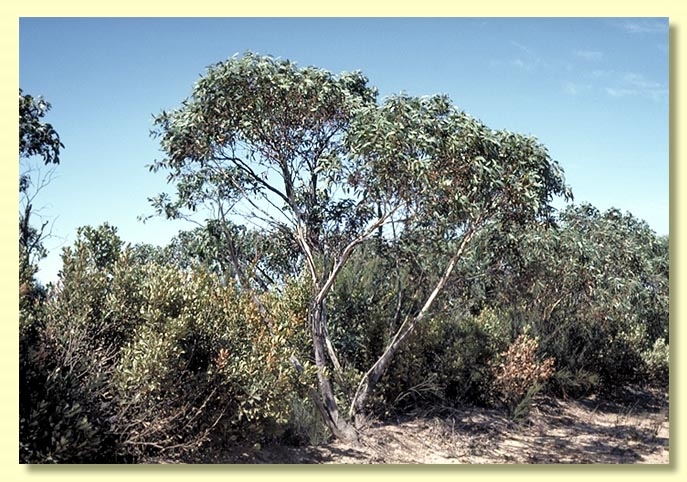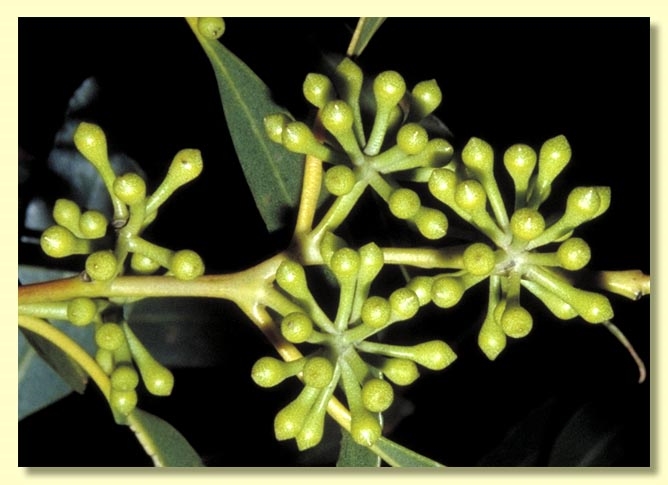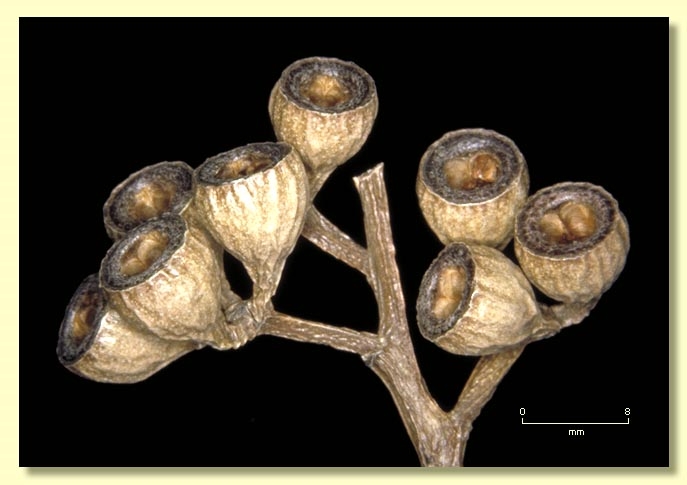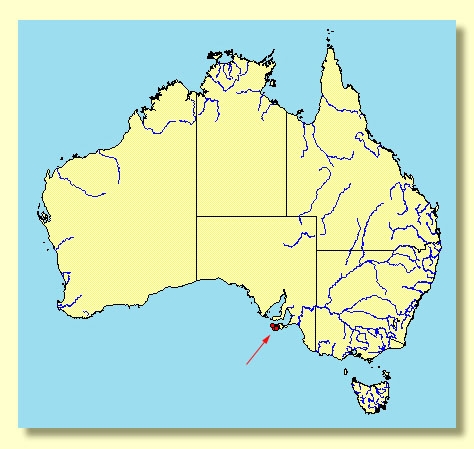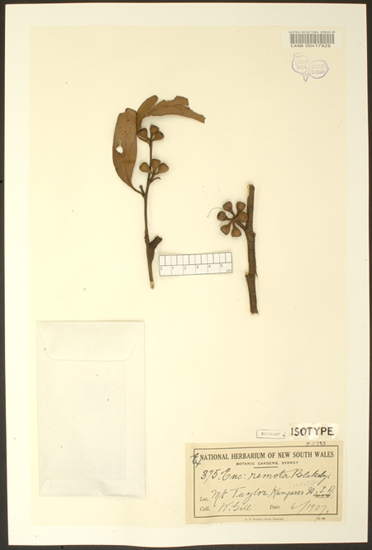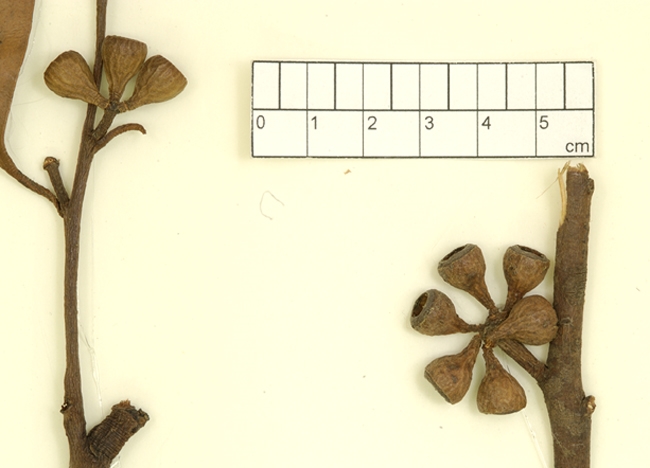Euclid - Online edition
Eucalyptus remota
Eucalyptus | Eucalyptus | Cineraceae | Psathyroxylon | Considenianae
Bark rough on whole trunk of trees or base of larger stems in mallees, fibrous, grey to grey-brown, sometimes smooth throughout; smooth bark yellow to grey.
Juvenile growth (coppice or field seedlings to 50 cm): stems usually round in cross-section; juvenile leaves opposite and shortly petiolate for ca 6 nodes, then alternate, elliptical to ovate or broadly lanceolate, 5–10.5 cm long, 3–4.5 cm wide, base rounded or tapering to petiole, later becoming oblique, pendulous, concolorous, grey-green.
Adult leaves alternate, petiole 1.4–2.5 cm long; blade lanceolate to falcate, 7.5–15 cm long, 2–4 cm wide, base oblique or tapering to petiole, concolorous, glossy, green, side-veins acute, sparsely to moderately reticulate, intramarginal vein parallel to and remote from margin, oil glands mostly island.
Inflorescence axillary unbranched, peduncles 0.6–1.8 cm long, buds 9 to ?19 or more per umbel, pedicels 0.1–0.6 cm long. Mature buds obovoid, 0.4–0.6 cm long, 0.3–0.4 cm wide, green, scar absent, operculum rounded, stamens inflexed, sometimes the outer stamens infertile, anthers reniform to cordate, versatile, dorsifixed, dehiscing by confluent slits, style short, stigma tapered, locules 3 to 5, the placentae each with 2 vertical ovule rows. Flowers white.
Fruit on pedicels 0.1–0.5 cm long, hemispherical or truncate-globose, 0.6–1 cm long, 0.5–1 cm wide, disc level, valves 3 to 5, near rim level or enclosed.
Seeds black or brown, 2–2.5 mm long, pyramidal or obliquely pyramidal, dorsal surface usually smooth, hilum terminal.
Cultivated seedlings (measured at ca node 10): cotyledons reniform to orbicular; stems rounded in cross-section, warty or smooth; leaves shortly petiolate, ovate-elliptic and opposite for ca 5 nodes then alternate, now conspicuously petiolate, ovate, 9–10.5 cm long, 3.5–4.5 cm wide, base truncate to rounded, later tapering, margin entire, apex pointed, dull, green.
Flowering has been recorded in November and December.
A mallee or small tree endemic to the western third of Kangaroo Island, South Australia, particularly on lateritic sands. It is partly to whooly rough-barked and has a crown on glossy green sparsely reticulate adult leaves, and large broadly ovate grey-green juvenile leaves alternate on the stems.
E. remota is the western-most species in a small group otherwise restricted to eastern Australia and distributed from central eastern Queensland to Tasmania. E. remota is closest to E. consideniana, a tree of south-eastern New South Wales and eastern Victoria that is usually a taller and fully rough-barked tree, while E. remota is only rough on the lower half of the trunk and entirely smooth in smaller plants. Fruit of E. remota are often larger and have three to five valves compared to the regular four valves of E. consideniana.
Eucalyptus remota belongs in Eucalyptus subgenus Eucalyptus section Cineraceae series Psathyroxylon having the following characters: cotyledons reniform, juvenile leaves alternate, bluish, adult leaves with side-veins acute, single axillary inflorescences with buds in clusters of seven to more than 15, buds with single operculum, inflexed stamens, some outer stamens without anthers (staminodes), the remainder with reniform anthers, style short, ovules in two rows, and seeds more or less pyramidal.
Within series Psathyroxylon, E. remota is closely related to E. andrewsii, E. consideniana, E. olida and E. sieberi, differing from all in its predominantly mallee habit and partial rough bark. The sixth species in this group, E. multicaulis, is also a mallee, endemic to sandstone areas in eastern New South Wales but is essentially smooth-barked. These six species form subseries Considenianae.

